Another update regarding extraordinary tools;
(Tools of/for freaks ![]() )
)
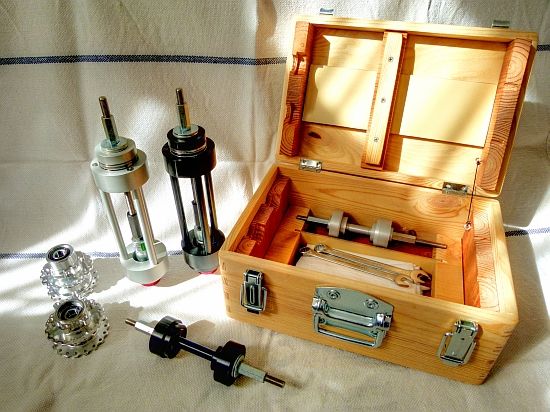
That’s a set of custom pulling devices for usual bearing extractor tools like the above mentioned, chiseled out of full aluminium rods (Ø 10 - 60 mm).
They’re intended to be used alternatively to a slide hammer for driving of the extractor tool.
(If anybody is unsure about a slide hammer’s function please google for “blind bearing puller” and “slide hammer” ![]() )
)
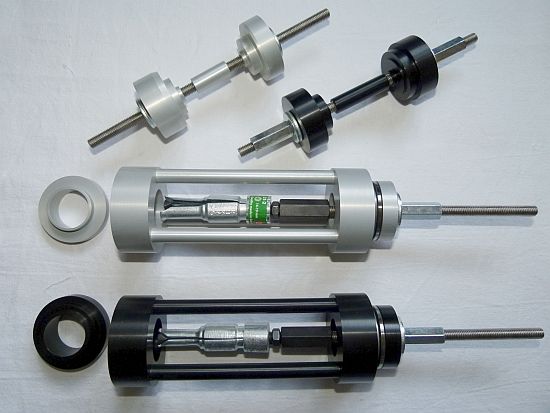
Via adapter rings they are matching exactly to Strida 18" hubs,
the black anodized set for rear hubs and the silver one for the front.
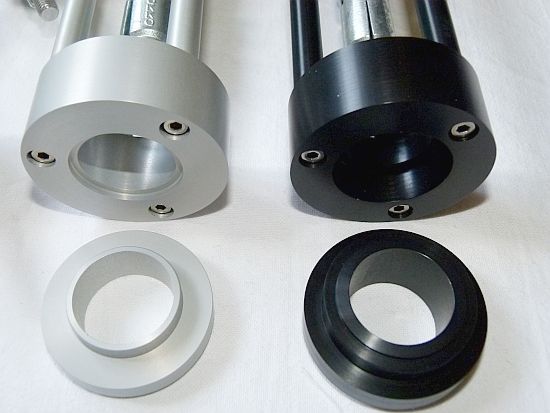
Axial ball bearings were used to reduce friction below the pulling nut.
The smaller, barbell shaped parts are pushing devices, these are intended to press the bearings back into their place.
Advantage: Due to the consistent area of support are damages of the hubs and bearings most likely impossible.
Disadvantage: The shown tool set will fit to 18" hubs only; for 16" hubs, bottom bracket and the bearings of the pivot pin would additional adapter rings be required. (And of course different pushing devices too.)
The initial reason to create these devices was - weird but true - the wish to anodize the hubs:
All Strida hubs were delivered with built-in bearings…
Usually, anodizing companies do not accept foreign material in their baths,
on the other hand would the acid bath treatments surely damage the bearings - so they must be taken out anyway.
And how does a (blind) bearing extractor work? some might ask…
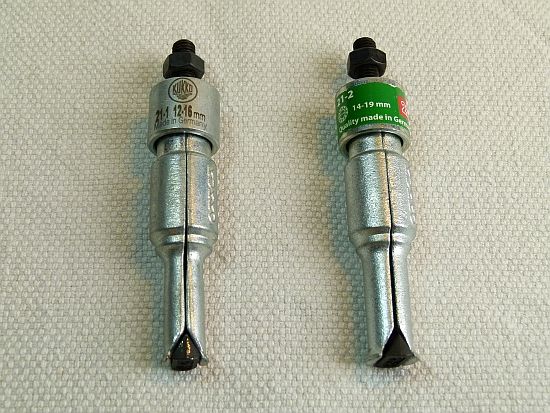
Inside of the two “grab hook” halves of the bearing there is small cotter A, it’s connected to a bolt C.
Tensioned via the hex nut B will the two halves be forced apart and grab the inner bearing ring.
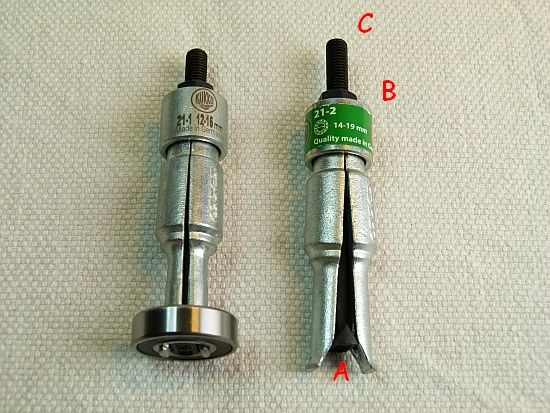
Second to last step will be the connecting of the extractor thread with the axle of the slide hammer (or pulling device) by using a long hex nut.
Finally can the bearing be hammered (or pulled) out…done!